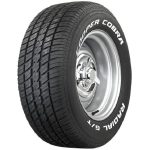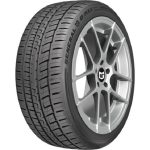Keeping your car tires properly inflated is crucial for safe driving, optimal fuel efficiency, and prolonged tire life. Whether you’re a new driver or an experienced one, knowing how to inflate car tires correctly is an essential skill. In this comprehensive guide, we’ll walk you through the process of inflating your car tires, offer tips for maintaining the right pressure, and discuss why tire inflation matters.
Understanding Tire Inflation
Why Proper Tire Inflation Matters
Proper tire inflation is key to maintaining vehicle safety and performance. Under-inflated tires can lead to poor handling, reduced fuel efficiency, and increased tire wear. Over-inflated tires, on the other hand, may cause a harsh ride and decreased traction. Ensuring that your tires are inflated to the manufacturer’s recommended pressure helps you achieve the best balance of comfort, safety, and performance.
Tire Pressure Recommendations
The recommended tire pressure for your vehicle can typically be found on a sticker inside the driver’s side door jamb, in the owner’s manual, or on the tire itself. It’s important to use the manufacturer’s specifications rather than relying on the pressure indicated on the tire sidewall, which represents the maximum pressure.
Tools You’ll Need
Tire Pressure Gauge
A tire pressure gauge is an essential tool for measuring the air pressure in your tires. There are several types of gauges available, including digital, dial, and pen-type gauges. Choose one that you find easy to read and use.
Air Pump or Compressor
You’ll need an air pump or compressor to add air to your tires. You can use a manual pump for a quick top-up or an electric compressor for a more efficient inflation process. Many service stations also have air pumps available for public use.
Valve Stem Cap Remover
A valve stem cap remover can be useful if you need to remove the cap from the valve stem. Most vehicles come with standard valve stems, which can be removed by hand.

How to Inflate Car Tires: A Step-by-Step Guide
1. Check the Current Tire Pressure
How to inflate car tires? Before inflating your tires, check the current pressure using a tire pressure gauge. Follow these steps:
- Remove the Valve Stem Cap: Unscrew the cap from the valve stem of the tire you’re checking.
- Press the Gauge onto the Valve Stem: Firmly press the gauge onto the valve stem to get an accurate reading.
- Read the Pressure: Note the pressure reading displayed on the gauge.
2. Compare with Recommended Pressure
Compare the measured pressure with the manufacturer’s recommended tire pressure. This information can usually be found on the sticker inside the driver’s side door jamb or in the vehicle’s owner’s manual. Determine if you need to add air or release some to reach the recommended pressure.
3. Add Air to the Tires
To add air to your tires:
- Attach the Air Pump: Connect the air pump nozzle to the valve stem. Ensure it is securely attached to avoid any leaks.
- Inflate the Tire: Turn on the air pump and allow it to add air to the tire. If you’re using a manual pump, pump the handle until the desired pressure is reached.
- Check the Pressure Regularly: Periodically stop to check the pressure with your gauge. Avoid over-inflating by stopping the pump once you reach the recommended pressure.
4. Adjust the Pressure if Necessary
If you’ve over-inflated the tire, release some air by pressing the small valve inside the valve stem with a tool or a small screwdriver. Recheck the pressure and repeat the process until the correct pressure is achieved.
5. Replace the Valve Stem Cap
Once the tire is properly inflated, screw the valve stem cap back onto the valve stem. This helps protect the valve from dirt and moisture, which can lead to leaks.
Tips for Maintaining Proper Tire Pressure
Regular Checks
Check your tire pressure at least once a month and before long trips. Tire pressure can fluctuate with changes in temperature, so it’s important to stay consistent with your checks.
Avoid Overloading Your Vehicle
Avoid overloading your vehicle, as this can put extra stress on your tires and affect their performance. Check the load rating on your tires and ensure you’re within the recommended limits.
Consider a Tire Monitoring System
Many modern vehicles come equipped with a Tire Pressure Monitoring System (TPMS), which alerts you when tire pressure is low. While this system is helpful, don’t rely solely on it—regular manual checks are still important.
Common Mistakes to Avoid
Ignoring Manufacturer Recommendations
Always follow the manufacturer’s recommended tire pressure rather than relying on the maximum pressure listed on the tire itself. Proper inflation ensures optimal performance and safety.
Over-Inflating the Tires
Over-inflation can lead to a harsh ride and increased risk of tire blowouts. Use a tire pressure gauge to ensure you’re inflating to the correct pressure.
Forgetting to Check the Spare Tire
Don’t forget to check the pressure of your spare tire. Many people overlook this tire, which can be problematic if you need to use it.
Maintaining Optimal Tire Pressure: Beyond Inflation
Regular Tire Inspections
In addition to regular inflation checks, it’s essential to inspect your tires visually. Look for signs of wear such as uneven tread, cracks, or bulges. These issues can indicate problems that need attention, potentially affecting your tire’s performance and safety.

Proper Tire Rotation
Regular tire rotation helps ensure even wear and extends the lifespan of your tires. Depending on your vehicle and driving conditions, it’s generally recommended to rotate your tires every 6,000 to 8,000 miles. Check your vehicle’s manual for specific recommendations.
Aligning Your Wheels
Proper wheel alignment ensures that your tires make full contact with the road, which helps in even wear and improved handling. Misalignment can lead to premature tire wear and affect your vehicle’s performance. If you notice your steering wheel pulling to one side or uneven tread wear, consider getting your alignment checked.
Seasonal Considerations
Adjusting for Temperature Changes
Tire pressure can fluctuate with changes in temperature. For every 10-degree Fahrenheit change in temperature, tire pressure can change by about 1 psi. During extreme weather changes, it’s crucial to check your tire pressure and adjust it as needed to maintain optimal performance.
Winter Tire Maintenance
If you use winter tires, they require special care. Winter tires are designed to provide better traction in cold and snowy conditions, but they can be affected by temperature changes as well. Ensure they are properly inflated and check their condition regularly throughout the winter season.
Enhancing Tire Lifespan
Keeping Tires Clean
Clean tires not only look better but also perform better. Road grime and debris can cause premature wear. Use a tire cleaner and brush to keep your tires free from harmful contaminants. Avoid using harsh chemicals that could damage the rubber.
Avoiding Hazardous Roads
Whenever possible, avoid driving over potholes, debris, and rough surfaces. Such conditions can cause damage to your tires, leading to premature wear or potential blowouts. Drive cautiously and be aware of road conditions.

The Benefits of Proper Tire Maintenance
Improved Fuel Efficiency
Properly inflated tires contribute to better fuel efficiency. Under-inflated tires create more rolling resistance, causing your vehicle to consume more fuel. By maintaining the correct pressure, you help your vehicle achieve optimal fuel economy.
Enhanced Safety
Well-maintained tires improve your vehicle’s handling and braking performance, which is critical for safe driving. Proper inflation reduces the risk of tire blowouts and improves traction, especially in adverse weather conditions.
Longer Tire Life
Consistent tire maintenance, including proper inflation, rotation, and alignment, helps extend the life of your tires. Investing time in these practices pays off by delaying the need for costly replacements.
Conclusion
Proper tire inflation is a simple yet crucial aspect of vehicle maintenance. By understanding how to inflate car tires correctly and regularly checking your tire pressure, you can enhance your vehicle’s safety, performance, and fuel efficiency. Remember to use the right tools, follow the manufacturer’s recommendations, and avoid common mistakes to ensure your tires are always in top condition.


